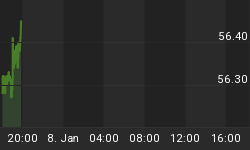You have already chosen a life apart from the mainstream. The site you are visiting is not part of the real world. Most of what you read on sites like this one are economic heresies. However, most of us realize that $2 of government spending plus $2 of government spending do not equal $5 of GDP. Rather, the sum of that calculation actually equals $3 of GDP. If we channel spending through governments, we get a negative return.
In the U.S., many voters thought they were encouraging change. Instead, what they got was the same old wasteful and failed policies of the previous Congress. That change which is occurring in the U.S. government is not producing economic recovery, so needed by much of the world. What we are getting is the Obama Depression, an economic slide made longer by changing so much of the government for the worse.

This week's first graph documents the failed policies of the current U.S. government. These investment results are for the S&P 500, Shanghai Stock Exchange Index, and $Gold since the November U.S. election. As always, reality trumps ideology. The difference between the return on $Gold and U.S. stocks continues to be about 50 percentage points. This is about as we observed last we visited this data.
Per the equity markets, the collective wisdom of all investors in the world, the Obama Depression is not likely to end soon. The Obama economic plan is wealth destroying, not job creating. Gold, not imaginary and faulty constructed dollar indices, is the ultimate valuation of a nation's money. In less than three months, the true value of the dollar, as measured by Gold money, has fallen by roughly 25%. That is a harsh and real evaluation of the prospects for current U.S. economic policy. Apparently, failed policies are again something on which we can rely.
However, that chart poses another question. Why in the same period of time that U.S. equities are collapsing is the Shanghai Stock Exchange Index rising? The world is filled with many stock markets and thousands of stocks. Not all are to fall victim to the failed Obama economic policies.
Investors are appraising the economic prospects for China to be far superior to those of the U.S. How can that be? Well, the answer is really simple. The government of China is pro-prosperity while the Obama administration is ideologically opposed to prosperity and wealth. The stock markets and Gold have voted, and to argue with that vote is foolhardy.
Gold is largely a defensive investment. Gold is wealth insurance, protecting investors from government policies. With the years of pain remaining under Obama economic policies, investors should be adding Gold on any and all price dips. However, that is not sufficient. We need to also have an offensive element to our wealth portfolio.
Having lived through the first oil shock, this author can assure you than few, in anybody, forecast it to be likely. Few foresaw the technology bubble till well after it had started. Only Hyman Minsky expected the financial mania, and consequences, of the past few years. China is another of those decade long investment themes not being widely recognized by investors. And part of the economic miracle in China is Agri-Food consumption. How many industries have comparable economic growth? Per the USDA, "China's estimated 300 million middle class consumers and rapid increase in demand for protein and feed ingredients helped drive its total agricultural imports to $43 billion in 2007 with the United States' share accounting for a quarter of the total, or $10.7 billion. China's imports of agricultural products have quintupled since its accession to the World Trade Organization (WTO) in 2001. (fas.usda.gov/country/China, 2009)" [Emphasis added.]

Our second chart this week portrays the movement of Agri-Food commodity prices with green triangles. All prices were buffeted by the hedge fund mania in the past year. However, Agri-Food prices seem to have bottomed. That support comes from the long-term trend of rising Agri-Food demand in China. In the years ahead, Chinese demand for Agri-Food will come to dominate global Agri-Food markets in ways few expect. And then in a few more years the world will face rising Agri-Food demand from India.
In that same chart are indicated the likely status of Agri-Food prices in an Elliot Wave framework. Wave II seems to be in the process of being completed. As this chart only covers the most recent years, Wave II's final C-Wave may yet come, if not completed, without any inconsistencies developing. In any event, Waves III, IV, and V remain to unfold in the years ahead.
Riding a structural economic cycle is perhaps both the most rewarding and easiest for investors. Gold is just one example of such a structural cycle, and Wave V still remains ahead for it. Agri-Foods are another, and it has likely only completed Wave II. Bear markets, like those still alive in many markets, are opportunities for investors to buy future wealth on the cheap. Is your portfolio positioned for the coming waves of the Agri-Food structural economic cycle? Or is your portfolio still mired in the banks and tech stocks of the last decade?
AGRI-FOOD THOUGHTS is from Ned W. Schmidt,CFA,CEBS, publisher of The Agri-Food Value View, a monthly exploration of the Agri-Food grand cycle being created by China, India, and Eco-energy. To receive the most recent issue of this publication, use this link: http://home.att.net/~nwschmidt/Order_AgriValueRECENT.html.

















